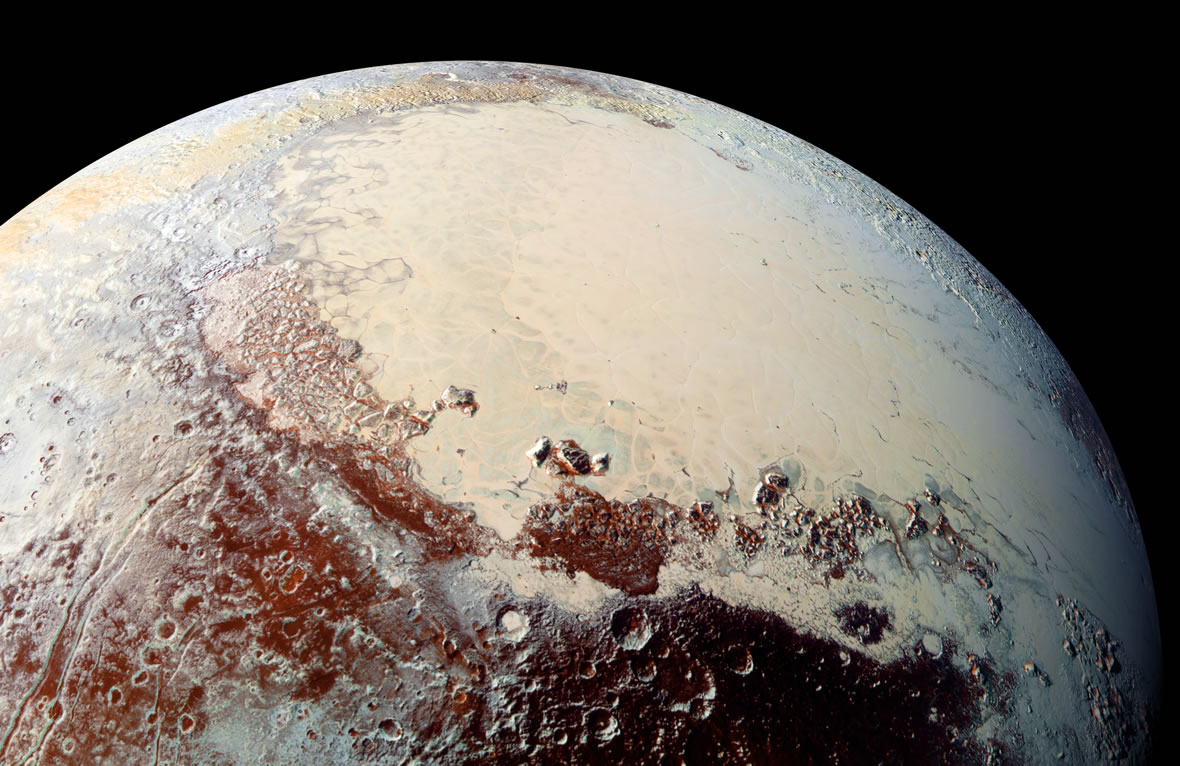March 25 Observatory Open House / Lecture /Public Star Night New Horizons By Dr. John Spencer
The Estes Valley Astronomical Society (EVAS) in conjunction with The Estes Park Memorial Observatory is offering a free public open house/star night on Saturday, March 25th, 7 PM. The goal of EVAS is to promote amateur astronomy and education in the Estes valley.
Our speaker for this evening will be Dr John Spencer from the Southwest Research Institute in Boulder and the title of his talk will be “NASA’s New Horizons Mission to Pluto and beyond”.

Sputnik Planum, in Color
Release Date: October 15, 2015
Credit: NASA/Johns Hopkins University Applied Physics Laboratory/Southwest Research Institute
On July 14th 2015, NASA’s New Horizons spacecraft made the first-ever encounter with the dwarf planet Pluto, its giant moon Charon, and entourage of four smaller satellites. New Horizons revealed that the Pluto system is unlike any place previously explored.
Dr. Spencer will discuss the many remarkable things we learned about the Pluto system, the experience of being part of the science team, and the plans for New Horizon’s continued exploration of the Kuiper Belt.
John Spencer is an Institute Scientist at the Southwest Research Institute in Boulder, Colorado, and a member of the New Horizons science team, where his roles have included ensuring safe passage of the spacecraft through the Pluto system, finding additional worlds beyond Pluto for New Horizons to explore, and planning the observations of the mission’s prime Kuiper Belt target, 2014 MU69. A native of England, he obtained his PhD in Planetary Sciences from the University of Arizona in 1987, and has since worked at the University of Hawaii and at Lowell Observatory in Flagstaff, Arizona (where Pluto was discovered) before joining Southwest Research Institute in 2004. He studies the moons and other small bodies of the outer solar system using ground-based telescopes, the Hubble Space Telescope, and close-up spacecraft observations. He was a science team member on the Galileo Jupiter orbiter and continues to work on the science team of the Cassini Saturn orbiter. Among other work, he was involved in the discovery of current activity on Saturn’s moon Enceladus, solving the mystery of the black-and-white appearance of Saturn’s moon Iapetus, and the discovery of oxygen on the surfaces of Jupiter’s icy moons.
The observatory is just north of the high school at 1600 Manford Ave. Park in the teacher’s parking lot between the high school and the observatory. The doors will open at 7:00 pm and the presentation will start at 7:30 pm. Weather permitting after the presentation, visitors will be invited to look through our large telescope at various celestial objects.
